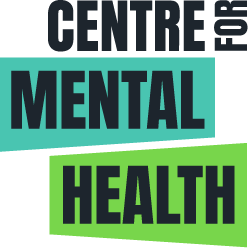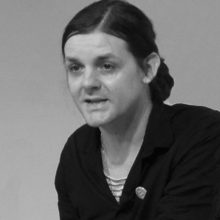On Wednesday 23rd March 2016, Social Spider CIC and Centre for Mental Health launched the final analysis of the year-long mental health crowdsourcing project A Day in the Life. A Day in the Life asked people who experience mental health difficulties on four calendar days across 2014/15 to write up to 700 words in answer to the question: How was your day? What made your mental health better and what made it worse?’
Over the course of the project, 879 days were submitted to the project, creating an archive of nearly half a million words of first person lived experience. The analysis looked at 782 of the 879 days submitted and tried to work out what, if anything, all of the days told us about what was important to people’s wellbeing. None of the accounts of days lived with mental health difficulty have been edited. All appear in the form they were submitted for anyone who wants to read.
The analysis tells us some interesting things about what is important to people with mental health difficulties. In the analysis the top three most often assigned positive indicators were: friend support; home life and sense of purpose. The three most often assigned negative indicators were: actual experience of mental health services; poor or unsatisfying sleep and physical health problems. This suggests that the things that really make us feel like life is worth living are having people to love and who love us; having a place we feel safe and having a sense that our life is more than just a day to day scrabble for survival. The negative indicators suggest that while mental health services are vital they can also have negative effects, causing us harm, worry or upset. They also point to the reality that mental ill-health is not the only discomfort we experience. Poor sleep and physical health problems can erode our sense of wellbeing and interact with our mental health.
Why did we do it?
I created the project because I love people’s little stories of everyday life. I ran a creative writing website for three years, a magazine written by people with mental health difficulties for seven and had my world changed by finding first the world of mental health blogs then later the world of mental health social media. I also think the systems and structures we’ve created around mental health are out of step with the realities living with a mental health difficulty in a modern world. Systems and structures struggle to ‘engage’ people, despite the fact that people are talking about life with mental health difficulties all the time.
I also wanted to find a way of showing that people with mental health difficulties have often been left out of consideration of individual wellbeing. Often, mental health difficulty has been seen in debate as being the consequence of a lack of wellbeing; which has led to avoiding considering what effects the wellbeing of people currently experiencing difficulties with their mental health. As someone who experiences mental health the question: ‘what makes life living?’ is often a pressing one.
Mental health difficulty is not something that only exists while researchers and clinicians are looking at it. It’s something woven through the lives of those that experience it. It may take centre stage in times of crisis or when its severity pushes other concerns into the background but more often it is merely part of the everyday facts of who we are; something like our shoe size or where we live.
Some days that people submitted to A Day in the Life were tragic. Some were full of joy. Many more were just what you’d expect, or what you’d expected if you know anyone who lives with mental health difficulty: just accounts of everyday people getting on with everyday things while also experiencing the additional challenges that problems around their mental health pose.
Making this archive of everyday life was important to us. In mental health, research has tended to focus more upon services and symptoms rather than the people who use them and experience them. Each one of the days submitted to A Day in the Life is a tiny window into the day-to-day reality of living with mental health difficulty; something that until recently has been mostly hidden and often ignored.
Crowdsourcing
One of the inspirations for a A Day in the Life was the early work of the social research organisation Mass Observation, founded in 1937 by a group of people, who aimed to create an ‘anthropology of ourselves’. Part of their work involved recruiting a panel of volunteer to keep diaries where they wrote about whatever seemed important to them. “The National Panel of Diarists was composed of people from all over Britain who either kept diaries or replied to regular open-ended questionnaires sent to them by the team in the London office.” (MO website). Simon Garfield’s book Our Hidden Lives was created from the post-war diaries of five anonymous members of the public who took part in Mass Observation’s work.
A Day in the Life is a crowdsourcing project. A Day in the Life capitalised on a change that the wider availability of the web has made possible. The growth of social media and digital technology presents new opportunities for people to meet, interact and learn from each other. People with mental health difficulties are writing, broadcasting, discussing and chronicling everyday life all of the time using social and digital media tools. Wikipedia (itself crowdsourced) defines crowdsourcing as something that: “combines the efforts of numerous self-identified volunteers or part-time workers, where each contributor, acting on their own initiative, adds a small contribution that combines with those of others to achieve a greater result.”
If people are already using social media to talk about mental health, I wanted to find a way of using digital technology to capture some of this huge outpouring of lived experience and to turn it into something that would be graspable to people who weren’t immersed in it. I wanted to find a way of bringing first person accounts together without placing a filter in the middle. Case studies can be useful; but they often strip out the interesting things that people really said and just leave in the bits that the person writing them think are most useful or interesting to their audience. This often leads to a battle between what the person the case study is about is trying to tell the world and what the person collecting the case study thinks the world wants to know.
I hope that we’ve broken some new ground with A Day in the Life and shown that it’s possible to do both without compromising either. It’s a project that has been part of my life since I first cooked it up over a cup of coffee in a cafe in 2013. I’ve read every single day shared and it’s made me cry, made me laugh and made me whoop with joy. As a proof of concept I think we’ve shown that it’s possible to use this technique to uncover lots of things; to provide a platform for people to share their experiences and to also create a broad, and interesting picture of what a patchwork of different experiences might tell us when considered all together.
Ultimately, the best way to consume A Day in the Life is to read the analysis while also sampling the days that people with mental health difficulty chose to share with the world.
People are awesome. If people with mental health difficulties hadn’t trusted us to treat their days with respect and care, we wouldn’t have a project.
Mark Brown is development director of Social Spider CIC. He is @markoneinfour on twitter. He blogs regularly on mental health, technology and innovation at thenewmentalhealth.org/
Image credit mike clarke


